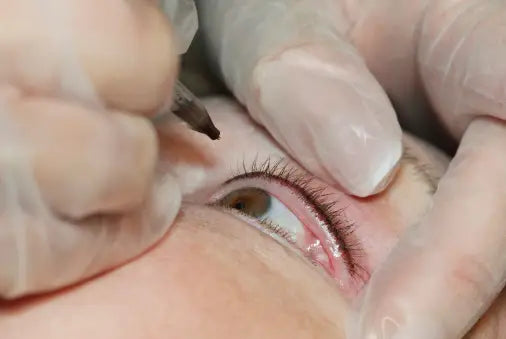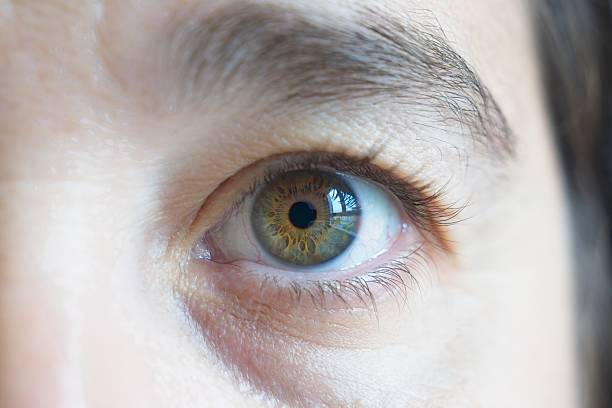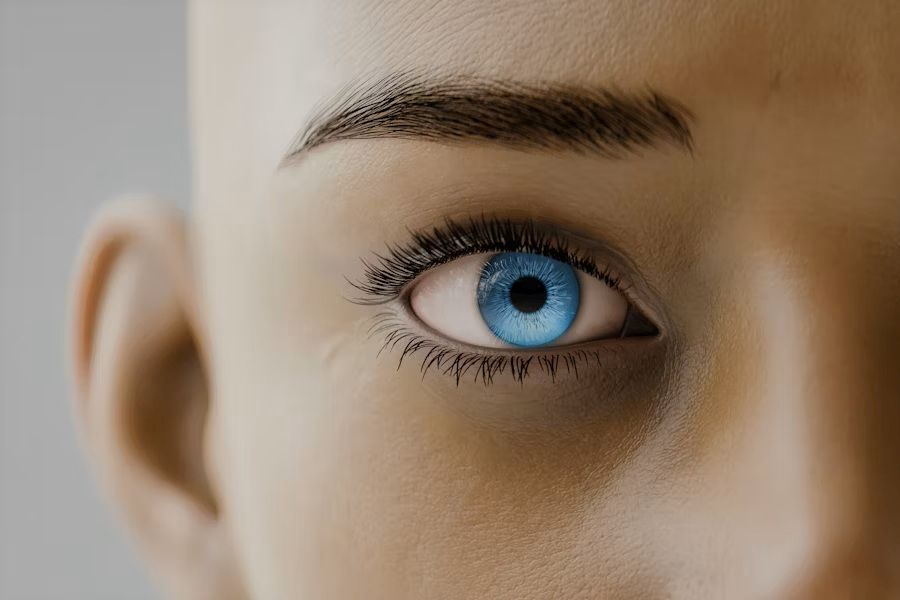Your Cart is Empty
Eye Tattoos: A Dangerous Trend or Misunderstood Art Form?

Eye tattoos, also known as scleral tattoos, have emerged as a controversial and captivating form of body modification in recent years. This unique practice involves injecting pigment directly into the white part of the eye, creating a striking and permanent change to one's appearance. As this trend gains traction, it has sparked intense debate among medical professionals, body modification enthusiasts, and the general public. This article delves deep into the world of eye tattoos, exploring their history, process, risks, and cultural implications to determine whether they are truly a dangerous trend or simply a misunderstood art form.
1. Understanding Eye Tattoos: Definition and History
Eye tattoos, or scleral tattoos, represent a radical departure from traditional body modification practices. Unlike conventional tattoos applied to the skin, eye tattoos involve the direct injection of pigment into the sclera, the white part of the eye. This procedure results in a dramatic alteration of the eye's appearance, with colors ranging from subtle tints to bold, vivid hues that can completely transform one's look.
The concept of eye modification is not entirely new in human history. Throughout the ages, various cultures have practiced forms of eye decoration and alteration. For instance, ancient Egyptians used kohl to outline their eyes, not just for cosmetic purposes but also for supposed protective and medicinal benefits. In more recent times, colored contact lenses have allowed people to temporarily change their eye color, satisfying the human desire for ocular transformation without permanent consequences.
However, the permanent alteration of eye color through tattooing is a distinctly modern development. The first documented scleral tattoo was performed in 2007 by body modification artist Luna Cobra. This groundbreaking procedure marked the beginning of a new era in extreme body modification, pushing the boundaries of what was previously thought possible or acceptable.
Since its inception, eye tattooing has gained a small but dedicated following, particularly among extreme body modification enthusiasts. These individuals often view eye tattoos as the ultimate form of self-expression, a way to stand out in a world where traditional tattoos and piercings have become increasingly mainstream.
The motivations behind choosing to undergo an eye tattoo are diverse and deeply personal. Some individuals are drawn to the unique aesthetic, seeking to create a look that is truly one-of-a-kind. For others, it's a way to overcome perceived flaws or insecurities about their natural eye appearance. In some cases, people with certain eye conditions or injuries may see eye tattoos as a way to cosmetically address discoloration or other visible issues.
Despite its growing popularity in certain circles, eye tattooing remains highly controversial. The medical community has raised significant concerns about the safety and long-term effects of this procedure, leading to heated debates about the balance between personal freedom and health risks. These concerns are not unfounded, as the eye is an incredibly delicate and complex organ, and the introduction of foreign substances can have serious consequences.
The history of body modification shows that humans have always sought ways to alter their appearance, often pushing societal and physical boundaries. Eye tattoos represent the latest frontier in this ongoing quest for uniqueness and self-expression. However, the potential risks associated with this procedure raise important questions about the limits of body modification and the responsibilities of both practitioners and recipients.
2. The Eye Tattoo Process: Techniques and Materials
The process of tattooing the eye is fundamentally different from traditional skin tattooing and requires specialized techniques and materials. It's crucial to understand that this procedure is not performed by regular tattoo artists but by individuals who have specifically trained in this niche area of body modification. The complexity and risks involved demand a level of expertise that goes far beyond standard tattooing practices.
The most common method for eye tattooing involves the following steps:
-
Preparation: The area around the eye is thoroughly cleaned and sterilized to minimize the risk of infection.
-
Anesthesia: The eye is numbed using local anesthetic eye drops to reduce discomfort during the procedure.
-
Injection: A small needle is used to create a tiny puncture in the sclera, typically near the limbus (the border between the sclera and the cornea).
-
Pigment Introduction: Pigment is injected into this opening using a syringe. The amount and pressure of injection are crucial factors in achieving the desired result.
-
Diffusion: The pigment then spreads throughout the scleral layer, creating the colored effect.
-
Aftercare: Immediate aftercare is provided, including antibiotic eye drops and instructions for the healing process.
The entire process typically takes only a few minutes per eye, but the results are permanent and irreversible. This permanence is one of the most significant factors that sets eye tattoos apart from other forms of eye modification.
The pigments used in eye tattoos are different from those used in skin tattoos. They need to be biocompatible and sterile to minimize the risk of infection and adverse reactions. However, it's important to note that no pigments have been officially approved for injection into the eye, which is one of the major concerns surrounding this practice. The lack of regulation and standardization in pigment production specifically for eye tattoos adds an additional layer of risk to the procedure.
The equipment used must be sterile and specifically designed for ocular procedures. This includes specialized needles, syringes, and other tools that are not typically found in a standard tattoo parlor. The sterility of the equipment is paramount, as any contamination could lead to severe infections and complications.
One of the challenges of eye tattooing is achieving an even color distribution. Unlike skin, which is relatively flat and uniform, the sclera is curved and can vary in thickness. This makes it difficult to predict exactly how the pigment will spread and settle. Skilled practitioners must have a deep understanding of ocular anatomy to achieve the desired result without causing damage to the eye structures.
It's crucial to emphasize that the expertise required for this procedure goes far beyond that of a typical tattoo artist. Practitioners need a deep understanding of ocular anatomy and the potential risks involved. Ideally, they should have a medical background or work closely with ophthalmologists. However, the reality is that many practitioners operate in a legal gray area, without formal medical training. This lack of standardized training and regulation is one of the most significant concerns surrounding eye tattoos.
The aftercare process for eye tattoos is also critical. Patients must follow strict guidelines to prevent infection and promote proper healing. This typically includes avoiding rubbing or touching the eyes, using prescribed antibiotic eye drops, and attending follow-up appointments to monitor the healing process.
The risks associated with body modifications like eye tattoos are significant, and it's essential to be fully informed before considering such a procedure. The irreversible nature of eye tattoos means that any complications or unsatisfactory results can have lifelong consequences.
3. Health Risks and Potential Complications
The health risks associated with eye tattoos are numerous and potentially severe. The eye is an incredibly delicate organ, and introducing foreign substances directly into its structure can lead to a range of complications, both immediate and long-term. The complexity of the eye's anatomy and its crucial role in our daily lives make any procedure involving this organ particularly risky.
Some of the most serious risks include:
-
Infection: The eye is particularly susceptible to infection. Introducing pigment and creating a wound in the sclera can lead to severe bacterial or fungal infections, which may result in vision loss or even loss of the eye itself. Endophthalmitis, a severe inflammation of the internal eye structures, is a particularly dangerous potential complication.
-
Vision Loss: Damage to the structures of the eye during the procedure can lead to partial or complete vision loss. This can occur due to retinal detachment, damage to the optic nerve, or other complications. The introduction of pigment can also interfere with the eye's natural light-filtering mechanisms, potentially affecting vision quality.
-
Sensitivity to Light: Many individuals who have undergone eye tattoos report increased sensitivity to light, which can be permanent and debilitating. This photophobia can significantly impact daily life, making it difficult to perform routine activities in well-lit environments.
-
Inflammation: Chronic inflammation of the eye is a common side effect, which can lead to ongoing pain and discomfort. This inflammation can affect various parts of the eye, including the sclera, cornea, and deeper structures, potentially leading to long-term vision problems.
-
Allergic Reactions: The body may react negatively to the pigments used, causing allergic reactions that can be difficult to treat due to the pigment's permanent nature. These reactions can range from mild irritation to severe swelling and pain.
-
Migration of Pigment: Over time, the injected pigment can move to other parts of the eye, potentially interfering with vision or causing other complications. This migration can be unpredictable and may occur years after the initial procedure.
-
Corneal Scarring: If the pigment comes into contact with the cornea, it can cause scarring, which may significantly impact vision clarity and quality.
-
Increased Intraocular Pressure: Some cases have reported increased pressure within the eye following scleral tattoos, which can lead to glaucoma if left untreated.
-
Difficulty in Diagnosing Eye Conditions: The presence of pigment in the sclera can make it challenging for eye care professionals to diagnose and treat other eye conditions that may develop over time.
Dr. Philip Rizzuto, an ophthalmologist and communications secretary for the American Academy of Ophthalmology, has stated, "My professional opinion is that this procedure is dangerous, and I would strongly recommend against it. The potential risks far outweigh any perceived benefits." This sentiment is echoed by many in the medical community, who view eye tattoos as an unnecessary and potentially harmful practice.
There have been several documented cases of severe complications from eye tattoos. In 2017, a 24-year-old Canadian model made headlines when she nearly lost her eye after a botched scleral tattoo procedure. She experienced intense pain, swelling, and vision problems, requiring multiple surgeries to save her eye. This case brought international attention to the dangers of eye tattoos and led to calls for stricter regulation of the practice.
It's important to note that even when performed by experienced practitioners, the long-term effects of eye tattoos are still largely unknown. The eye is a complex organ, and introducing foreign substances into it may have unforeseen consequences that only become apparent years or decades later. The irreversible nature of the procedure means that individuals who experience complications may have to deal with the consequences for the rest of their lives.
The potential for eye injuries in everyday life is already significant, and adding the additional risk factor of an eye tattoo can compound these dangers. The medical community continues to warn against the practice, emphasizing that the risks far outweigh any aesthetic benefits.
4. Legal and Ethical Considerations
The legal status of eye tattoos varies significantly around the world, reflecting the complex ethical considerations surrounding this practice. In many jurisdictions, the procedure exists in a legal gray area, neither explicitly banned nor regulated. This lack of clear legislation creates challenges for both practitioners and potential recipients, as well as for health authorities tasked with protecting public safety.
In the United States, the legal landscape is particularly complex:
-
Some states, like Oklahoma and Indiana, have passed laws specifically banning eye tattoos. These bans were often enacted in response to high-profile cases of complications or concerns raised by medical professionals.
-
Other states regulate the practice under existing body modification or tattoo laws. However, these laws were typically not designed with eye tattoos in mind and may not adequately address the unique risks associated with this procedure.
-
In many areas, there is no specific legislation addressing eye tattoos, leaving the practice largely unregulated. This legal vacuum can lead to a lack of oversight and potentially dangerous practices.
The FDA has not approved any pigments for injection into the eyeball. This lack of approval means that those performing eye tattoos are operating without official safety guidelines or standards. The absence of FDA-approved materials specifically for this purpose raises questions about the safety and long-term effects of the pigments being used.
Internationally, the legal status of eye tattoos is equally varied. Some countries have taken a proactive approach to ban or heavily regulate the practice, while others have yet to address it specifically in their legislation. This inconsistency in global regulation creates challenges for international efforts to study and address the risks associated with eye tattoos.
From an ethical standpoint, eye tattoos raise several important questions:
-
Informed Consent: Can individuals truly give informed consent for a procedure with such significant risks and unknown long-term effects? The complexity of eye anatomy and the potential for severe complications make it challenging for the average person to fully understand the risks they are taking.
-
Professional Responsibility: What qualifications should be required for someone to perform this procedure? Should it be limited to medical professionals? The lack of standardized training and certification for eye tattoo practitioners raises concerns about the safety and quality of the procedures being performed.
-
Bodily Autonomy: To what extent should individuals have the right to modify their bodies, even when those modifications carry significant health risks? This question touches on fundamental issues of personal freedom and the role of government in protecting public health.
-
Public Health Concerns: Does the potential burden on healthcare systems from complications justify restricting or banning the practice? Complications from eye tattoos could potentially strain medical resources and impact public health more broadly.
-
Regulation vs. Prohibition: Is it better to regulate the practice to ensure safety standards, or to prohibit it entirely due to the inherent risks? This debate mirrors similar discussions around other controversial body modification practices.
Medical associations worldwide have taken a strong stance against eye tattoos. The American Academy of Ophthalmology has issued statements warning of the dangers and advising against the procedure. Similarly, the Canadian Ophthalmological Society has called for a ban on eye tattoos, citing the severe risks involved. These professional organizations emphasize that the potential for permanent vision loss and other complications far outweighs any aesthetic benefits.
Despite these warnings, proponents of body modification argue that individuals should have the right to make decisions about their own bodies, including taking on the risks associated with eye tattoos. They contend that with proper information and skilled practitioners, the risks can be minimized.
The ethical debate surrounding eye tattoos also touches on broader issues of medical ethics and the limits of body modification. It raises questions about the role of medical professionals in non-therapeutic procedures and the boundaries between cosmetic enhancement and potentially harmful practices.
As the popularity of extreme body modifications continues to grow, legislators and health authorities face the challenge of balancing personal freedom with public safety. The case of eye tattoos serves as a focal point for these discussions, highlighting the need for careful consideration of the ethical implications of emerging body modification practices.
5. Cultural and Artistic Perspectives
Eye tattoos, while controversial from a medical standpoint, have gained a following in certain cultural and artistic circles. To understand the appeal of this extreme form of body modification, it's essential to explore the cultural context and artistic motivations behind the practice.
In the realm of body modification, eye tattoos represent the pinnacle of commitment to personal transformation. For some individuals, the ability to alter such a fundamental aspect of their appearance as eye color is seen as the ultimate expression of bodily autonomy and self-creation. This perspective aligns with broader trends in body modification culture, where pushing boundaries and exploring new forms of alteration are highly valued.
From an artistic standpoint, eye tattoos offer a unique canvas for creative expression. The human eye, often described as the "window to the soul," holds significant symbolic and aesthetic importance in many cultures. By altering the appearance of the eye, individuals can create a striking visual effect that goes beyond traditional forms of body art.
Some proponents of eye tattoos view the practice as a form of living art. They argue that the human body is a legitimate medium for artistic expression, and that eye tattoos represent an evolution of this concept. The permanence of the modification adds to its perceived significance, with some individuals viewing their altered eyes as a lifelong commitment to their artistic vision.
In certain subcultures, particularly those associated with extreme body modification, eye tattoos have become a symbol of dedication and belonging. The willingness to undergo such a risky and controversial procedure can be seen as a badge of honor, demonstrating one's commitment to the ideals and aesthetics of the community.
However, it's important to note that the cultural acceptance of eye tattoos varies widely. In many mainstream contexts, the practice is viewed with skepticism or outright rejection. The dramatic and often unsettling appearance of tattooed eyes can lead to social stigma and practical challenges in everyday life.
From a broader cultural perspective, the emergence of eye tattoos can be seen as part of a larger trend towards extreme forms of self-expression and body modification. This trend reflects changing attitudes towards personal identity and the malleability of the human form in the modern era.
Artists and body modification practitioners who support eye tattoos often emphasize the transformative power of the procedure. They argue that it allows individuals to realize a vision of themselves that may not be possible through natural means or less extreme forms of modification.
However, critics, including many in the artistic community, argue that the risks associated with eye tattoos outweigh any potential artistic value. They contend that there are safer and equally impactful ways to express oneself artistically without jeopardizing one's health and vision.
The debate surrounding eye tattoos in cultural and artistic contexts often touches on deeper philosophical questions about the nature of art, the limits of self-expression, and the relationship between the body and personal identity. As with many controversial art forms, the discussion around eye tattoos reflects broader societal tensions between tradition and innovation, safety and risk-taking, and individual freedom and social responsibility.
The history of tattoos and body art shows that practices once considered extreme or taboo can sometimes gain wider acceptance over time. However, the unique risks associated with eye tattoos make it unlikely that this practice will follow the same path to mainstream acceptance as other forms of body modification.
As the debate continues, it's clear that eye tattoos will remain a contentious issue at the intersection of art, culture, and medical ethics. The practice challenges our understanding of personal expression and raises important questions about the boundaries of body modification in contemporary society.
6. Alternatives and Safety Measures
Given the significant risks associated with eye tattoos, it's crucial to explore safer alternatives for those seeking to alter their eye appearance. Additionally, for individuals who are determined to pursue eye tattoos despite the risks, understanding potential safety measures is essential.
Safer Alternatives:
-
Colored Contact Lenses: The most popular and safest alternative to eye tattoos is the use of colored contact lenses. These come in a wide variety of colors and styles, from subtle enhancements to dramatic changes. Importantly, they are temporary and do not carry the same risks as permanent eye modifications.
-
Cosmetic Eye Makeup: Advanced makeup techniques can create striking eye effects without any permanent changes. This includes the use of specialized eyeliners, eyeshadows, and even prosthetic applications for theatrical or costume purposes.
-
Digital Alteration: For those primarily interested in changing their appearance in photos or videos, digital editing techniques can safely alter eye color and appearance without any physical modification.
-
Theatrical Scleral Lenses: These are large, hand-painted contact lenses that cover the entire visible part of the eye. They can create dramatic effects similar to eye tattoos but are removable and much safer.
-
Eye Jewelry: Some body modification enthusiasts opt for small jewelry implants near the eye, which can create a unique look without directly altering the eye itself. However, this still carries risks and should only be done by experienced professionals.
The importance of eye health cannot be overstated. Our eyes are essential for navigating the world around us, and any unnecessary risk to vision should be carefully considered. The desire for unique self-expression should be balanced against the very real possibility of permanent damage to one's eyesight.
For those drawn to the aesthetic of eye tattoos, exploring the safer alternatives mentioned above can provide similar visual effects without the associated health risks. These options allow for creativity and self-expression while preserving the integrity and health of the eyes.
Leave a comment
Comments will be approved before showing up.




